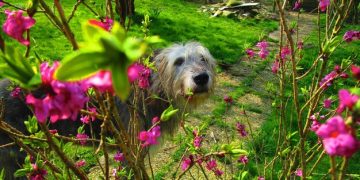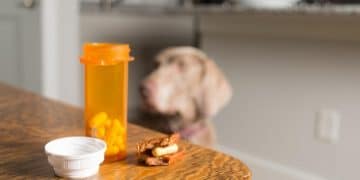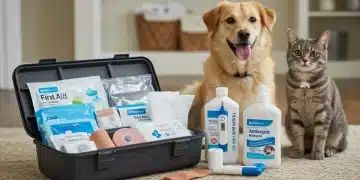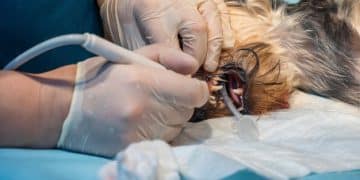Pet-Proof Your Garden: Keep Your Furry Friends Safe
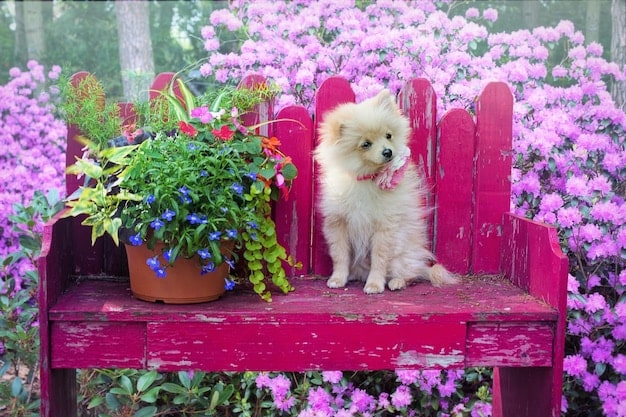
Pet-proofing your garden involves identifying and removing toxic plants, securing boundaries, and storing chemicals safely, ensuring a safe and enjoyable outdoor space for your pets.
Creating a beautiful garden doesn’t have to come at the expense of your pet’s safety. Learn how to pet-proof your garden: protecting your furry friends from toxic plants and chemicals with our comprehensive guide.
How to Identify Toxic Plants in Your Garden
Knowing which plants pose a threat to your pets is the first step in creating a safe outdoor environment. Familiarizing yourself with common garden plants that are toxic to animals can prevent accidental ingestion and potential health emergencies.
Common Toxic Plants for Pets
Several popular garden plants can be harmful if ingested by pets. It’s essential to be aware of these plants and their potential effects.
- Lilies: Highly toxic to cats, causing kidney failure.
- Azaleas and Rhododendrons: Can cause vomiting, diarrhea, and heart problems.
- Oleander: Contains cardiac glycosides that can affect the heart.
Resources for Plant Identification
Utilize online databases and apps to identify potentially toxic plants in your garden accurately. Consulting with local horticultural experts and veterinarians can also provide valuable insights and specific recommendations for your region.
Identifying toxic plants is crucial for ensuring your pet’s safety in the garden; taking proactive steps to remove these hazards protects your furry friends from potential health risks.
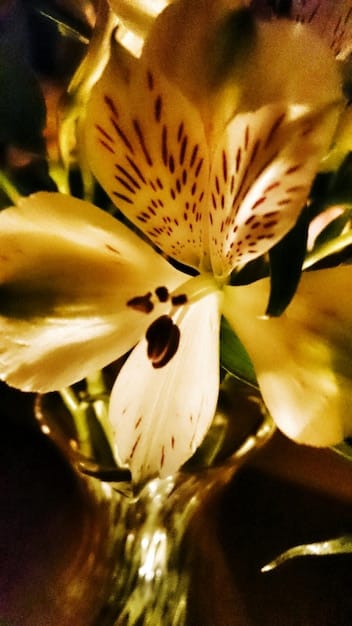
Safe Alternatives: Pet-Friendly Plants to Grow
Creating a pet-friendly garden doesn’t mean sacrificing beauty. Many plants are safe for pets and can add color and vibrancy to your outdoor space. Incorporating these plants ensures a safe and enjoyable garden for everyone.
Recommended Non-Toxic Plants
Choose plants that are not only visually appealing but also safe for your pets. These plants offer beauty without the risk of toxicity.
- Sunflowers: Cheerful and non-toxic, adding height and brightness to your garden.
- Petunias: Colorful and versatile flowers that are generally safe for pets.
- Marigolds: Easy to grow and add vibrant color while being non-toxic.
Designing a Safe Garden Layout
The layout of your garden can also contribute to pet safety. Consider creating designated areas where your pets can roam freely without access to potentially harmful plants.
Opting for pet-friendly plants and designing a safe garden layout is a proactive measure to protect your pets; by integrating these plants and design strategies, you create a beautiful and secure environment for your furry friends to explore.
Securing Your Garden: Fencing and Barriers
Creating a physical barrier to separate pets from potentially hazardous areas of your garden is essential for their safety. Fencing and barriers can prevent pets from accessing toxic plants or harmful chemicals.
Types of Pet-Friendly Fencing
Various fencing options are designed to keep pets safe while blending seamlessly with your garden’s aesthetics. Choose a fence that is both functional and visually appealing.
- Wire Mesh Fencing: Provides a sturdy barrier without obstructing the view.
- Decorative Fencing: Adds aesthetic appeal while keeping pets out of restricted areas.
- Electric Fencing: Can be used to deter pets from specific areas without causing harm.
Creating Barriers Around Sensitive Areas
Supplement fencing with additional barriers around specific plants or areas that require extra protection. This approach ensures that even curious pets stay away from potential hazards.
Securing your garden with appropriate fencing and strategically placed barriers is a key step in pet-proofing; these measures create a safe boundary, reducing the risk of exposure to dangerous plants and chemicals.
Safe Chemical Storage and Usage
Properly storing and using garden chemicals is crucial for protecting your pets from accidental poisoning. Understanding how to handle these substances responsibly minimizes the risk of harm to your furry friends.
Best Practices for Storing Chemicals
Follow these guidelines to ensure that garden chemicals are stored safely and out of reach of pets.
- Original Containers: Always keep chemicals in their original, labeled containers.
- Secure Cabinets: Store chemicals in locked cabinets or sheds.
- Elevated Shelves: Keep chemicals on high shelves, out of pets’ reach.
Pet-Safe Alternatives to Harmful Chemicals
Consider using organic and pet-safe alternatives to traditional garden chemicals. These products are less likely to harm your pets while still effectively managing garden pests and weeds.
Safe chemical storage and the use of pet-safe alternatives are vital components of a pet-proof garden; employing these strategies safeguards your pets from the dangers of accidental chemical exposure, ensuring their well-being in your outdoor space.
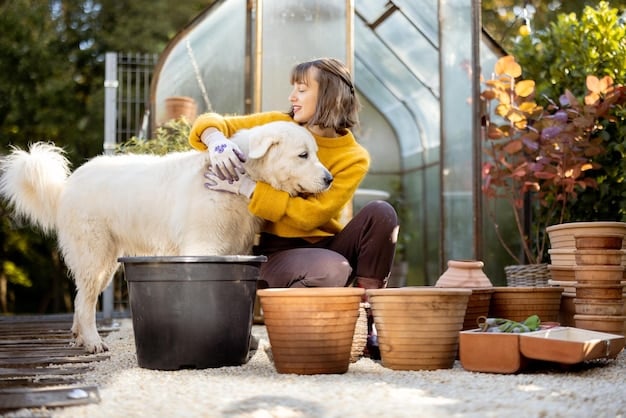
Water Safety: Ponds and Water Features
While water features can enhance the beauty of your garden, they also pose potential risks to pets. Ensuring that water features are safe for pets is essential for preventing accidents and maintaining a healthy outdoor environment.
Preventing Drowning Accidents
Take precautions to prevent pets from falling into ponds or water features and being unable to get out.
- Sloped Edges: Design water features with sloped edges to allow easy exit.
- Shallow Areas: Include shallow areas where pets can stand comfortably.
- Fencing: Enclose water features with fencing to prevent accidental access.
Maintaining Clean Water
Regularly clean water features to prevent the growth of harmful bacteria and algae. Provide fresh, clean water for your pets separately to discourage them from drinking from potentially contaminated sources.
Prioritizing water safety in your garden ensures that your pets can enjoy the sights and sounds of water features without risk; taking these proactive steps protects them from drowning and waterborne illnesses, adding to the overall safety of your outdoor space.
First Aid and Emergency Contacts
Knowing how to respond in the event of a pet poisoning or other garden-related emergency is crucial. Being prepared with first aid knowledge and emergency contact information can save your pet’s life.
Recognizing Signs of Poisoning
Be familiar with the signs of poisoning in pets, which can include vomiting, diarrhea, lethargy, and seizures. Early recognition of these symptoms can prompt timely intervention.
Emergency Contacts and Resources
Compile a list of emergency contacts, including your veterinarian, a local animal poison control center, and the nearest emergency animal hospital. Keep this list readily accessible.
First aid and preparedness are key defenses against garden-related pet emergencies; knowing what to do during a crisis and having immediate access to veterinary care can significantly improve your pet’s chances of recovery.
| Key Point | Brief Description |
|---|---|
| 🌿 Toxic Plant Removal | Identify and eliminate hazardous plants like lilies and azaleas. |
| 🌻 Safe Plant Alternatives | Opt for pet-friendly plants such as sunflowers and petunias. |
| 🚧 Garden Fencing | Install barriers to keep pets away from dangerous areas. |
| 🧪 Chemical Safety | Store chemicals securely and use pet-safe alternatives when possible. |
FAQ
▼
Common toxic plants include lilies, azaleas, rhododendrons, and oleander. These plants can cause a range of symptoms from vomiting to more severe cardiac issues.
▼
Use fencing and barriers to restrict access to potentially harmful plants. Also, provide your pets with plenty of safe chew toys and interactive activities to distract them.
▼
Contact your veterinarian or animal poison control immediately. Try to identify the plant ingested and be prepared to describe your pet’s symptoms to the vet.
▼
While organic pesticides are generally safer, it’s essential to check the labels and ensure they are specifically marked as pet-safe. Always follow the instructions carefully when applying.
▼
Regularly inspect your garden for new or overgrown plants that may be toxic. A weekly check is a good practice to maintain a safe environment for your pets.
Conclusion
By identifying potential hazards, choosing pet-friendly plants, securing your garden, and storing chemicals safely, you can create a beautiful and secure outdoor space for your furry companions. Prioritizing their safety allows you to enjoy gardening without worry.
